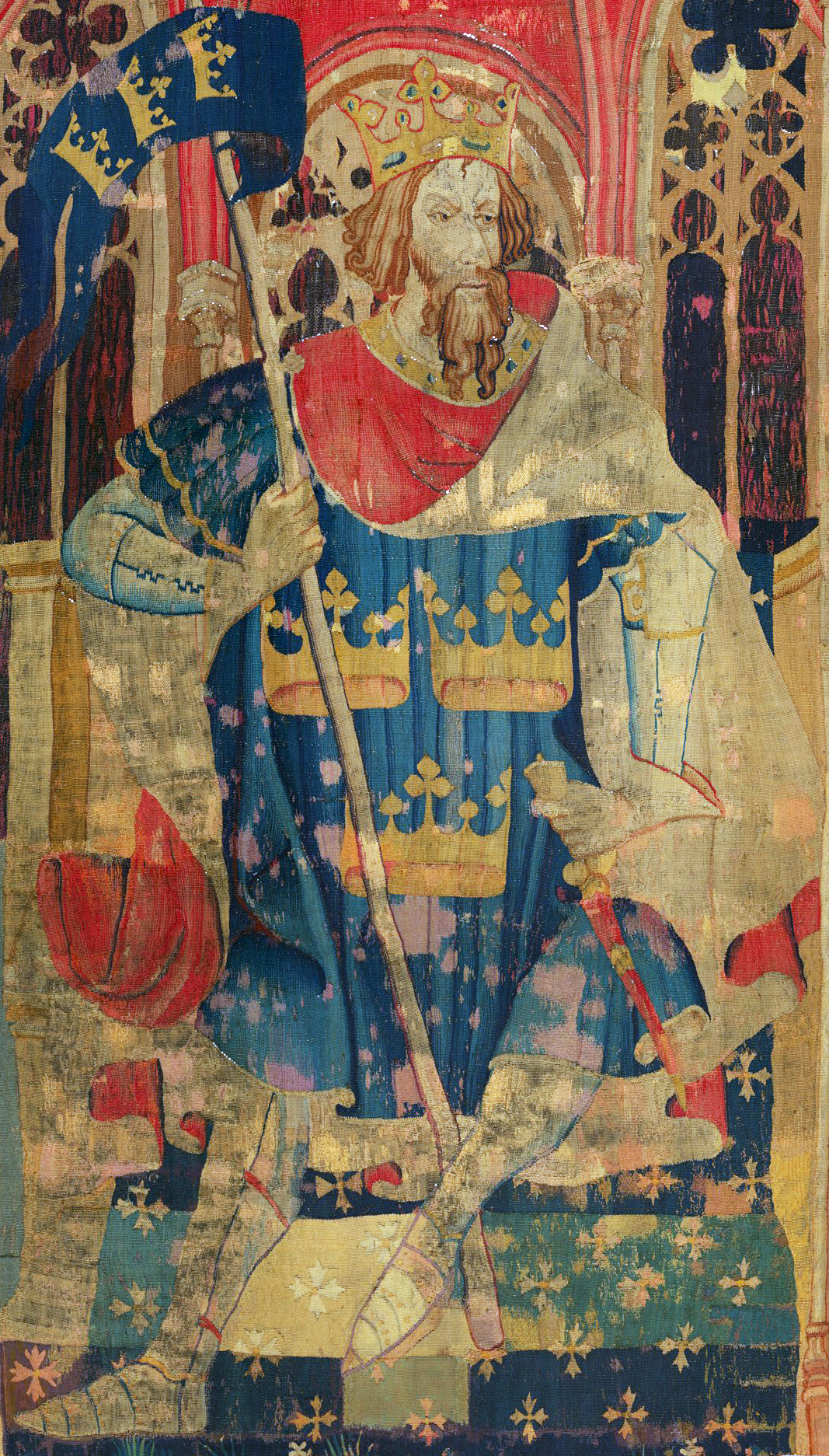|
Lords Of Magic
''Lords of Magic'' is a turn-based strategy Microsoft Windows game designed for Windows 95/98 by Sierra On-Line. The game was intended to combine elements of '' Heroes of Might and Magic II'' and ''Lords of the Realm II''. The special edition also contains the ''Legends of Urak'' quest pack, a set of five individual quests that revolve around stories unrelated to the main plot of the game. Gameplay The world is filled with wandering monsters and fixed buildings filled with monsters. ''Lords of Magic'' is notably different from other strategy games in that it has only one map, with each faith starting at a different location. This results in a somewhat repetitive nature, counteracted somewhat by a supplied map editor. Throughout the game, players travel across the high-fantasy land of Urak (which is split into 8 distinct regions, one for each faith), building an army composed of archers, infantry, cavalry, and creatures. The overworld map gameplay is turn-based; here, players ma ... [...More Info...] [...Related Items...] OR: [Wikipedia] [Google] [Baidu] |
Impressions Games
Impressions Games was a British video game developer founded by David Lester. He sold the company to Sierra On-Line in 1995, who was then bought out by Cendant and eventually, Vivendi Universal (now known as Vivendi SA). Impressions specialized in historical strategy games and is best known for its City Building Series, which include '' Caesar'', '' Pharaoh'', '' Zeus: Master of Olympus'', and '' Emperor: Rise of the Middle Kingdom''. In 1998, Impressions Games was the most profitable division of Havas Interactive, with $20 million in net profit. This surpassed Blizzard Entertainment for the period, according to CNET Gamecenter. Mike Ryder, former president of Sierra Entertainment, forced a change in management in October 2001, during development of ''Lords of the Realm III''. Rod Nakamoto was installed as the new director. ''Lords III'' became Impressions's final game, and was released to mediocre reviews in March 2004. The studio was shut down in April 2004 when Vivendi ... [...More Info...] [...Related Items...] OR: [Wikipedia] [Google] [Baidu] |
High Fantasy
High fantasy, or epic fantasy, is a subgenre of fantasy defined by the epic nature of its setting or by the epic stature of its characters, themes, or plot. Brian Stableford, ''The A to Z of Fantasy Literature'', (p. 198), Scarecrow Press, Plymouth. 2005. High fantasy is usually set in an alternative, fictional ("secondary") world, rather than the "real" or "primary" world. This secondary world is usually internally consistent, but its rules differ from those of the primary world. By contrast, low fantasy is characterized by being set on Earth, the primary or real world, or a rational and familiar fictional world with the inclusion of magical elements. Characteristics The term "high fantasy" was coined by Lloyd Alexander in a 1971 essay, "High Fantasy and Heroic Romance", which was originally given at the New England Round Table of Children's Librarians in October 1969. "High fantasy" often serves as a broad term to include a number of different flavors of the fantasy ... [...More Info...] [...Related Items...] OR: [Wikipedia] [Google] [Baidu] |
Patch (software)
A patch is data that is intended to be used to modify an existing software resource such as a program or a file, often to fix bugs and security vulnerabilities. A patch may be created to improve functionality, usability, or performance. A patch is typically provided by a vendor for updating the software that they provide. A patch may be created manually, but commonly it is created via a tool that compares two versions of the resource and generates data that can be used to transform one to the other. Typically, a patch needs to be applied to the specific version of the resource it is intended to modify, although there are exceptions. Some patching tools can detect the version of the existing resource and apply the appropriate patch, even if it supports multiple versions. As more patches are released, their cumulative size can grow significantly, sometimes exceeding the size of the resource itself. To manage this, the number of supported versions may be limited, or a complete c ... [...More Info...] [...Related Items...] OR: [Wikipedia] [Google] [Baidu] |
Attila The Hun
Attila ( or ; ), frequently called Attila the Hun, was the ruler of the Huns from 434 until his death in early 453. He was also the leader of an empire consisting of Huns, Ostrogoths, Alans, and Gepids, among others, in Central and Eastern Europe. As nephews to Rugila, Attila and his elder brother Bleda succeeded him to the throne in 435, ruling jointly until the death of Bleda in 445. During his reign, Attila was one of the most feared enemies of the Western and Eastern Roman Empires. He crossed the Danube twice and plundered the Balkans but was unable to take Constantinople. In 441, he led an invasion of the Eastern Roman (Byzantine) Empire, the success of which emboldened him to invade the West. He also attempted to conquer Roman Gaul (modern France), crossing the Rhine in 451 and marching as far as Aurelianum (Orléans), before being stopped in the Battle of the Catalaunian Plains. He subsequently invaded Italy, devastating the northern provinces, but was unable ... [...More Info...] [...Related Items...] OR: [Wikipedia] [Google] [Baidu] |
Valkyrie
In Norse mythology, a valkyrie ( or ; from ) is one of a host of female figures who guide souls of the dead to the god Odin's hall Valhalla. There, the deceased warriors become ('single fighters' or 'once fighters').Orchard (1997:36) and Lindow (2001:104). When the are not preparing for the cataclysmic events of Ragnarök, the valkyries bear them mead. Valkyries also appear as lovers of heroes and other mortals, where they are sometimes described as the daughters of royalty, sometimes accompanied by ravens and sometimes connected to swans or horses. Valkyries are attested in the ''Poetic Edda'' (a book of poems compiled in the 13th century from earlier traditional sources), the ''Prose Edda'', the (both by Snorri Sturluson) and the (one of the Sagas of Icelanders), all written—or compiled—in the 13th century. They appear throughout the poetry of skalds, in a 14th-century magical formula, charm, and in various runic inscriptions. The Old English cognate term appears ... [...More Info...] [...Related Items...] OR: [Wikipedia] [Google] [Baidu] |
Mordred
Mordred or Modred ( or ; Welsh: ''Medraut'' or ''Medrawt'') is a major figure in the legend of King Arthur. The earliest known mention of a possibly historical Medraut is in the Welsh chronicle ''Annales Cambriae'', wherein he and Arthur are ambiguously associated with the Battle of Camlann in a brief entry for the year 537. Medraut's figure seemed to have been regarded positively in the early Welsh tradition and may have been related to that of King Arthur's family, Arthur's son. As Modredus, Mordred was depicted as Arthur's traitorous nephew and a legitimate son of King Lot in the pseudo-historical work ''Historia Regum Britanniae'', which then served as the basis for the subsequent evolution of the legend from the 12th century. Later variants most often characterised Mordred as Arthur's villainous bastard son, born of an incestuous relationship with Morgause, his half-sister, the queen of Lothian or Orkney named either Anna, Orcades, or Morgause. The accounts presented in the ... [...More Info...] [...Related Items...] OR: [Wikipedia] [Google] [Baidu] |
Holy Grail
The Holy Grail (, , , ) is a treasure that serves as an important motif in Arthurian literature. Various traditions describe the Holy Grail as a cup, dish, or stone with miraculous healing powers, sometimes providing eternal youth or sustenance in infinite abundance, often guarded in the custody of the Fisher King and located in the hidden Grail castle. By analogy, any elusive object or goal of great significance may be perceived as a "holy grail" by those seeking such. A mysterious "grail" (Old French: ''graal'' or ''greal''), wondrous but not unequivocally holy, first appears in '' Perceval, the Story of the Grail'', an unfinished chivalric romance written by Chrétien de Troyes around 1190. Chrétien's story inspired many continuations, translators and interpreters in the later-12th and early-13th centuries, including Wolfram von Eschenbach, who portrayed the Grail as a stone in ''Parzival''. The Christian, Celtic or possibly other origins of the Arthurian grail trope are ... [...More Info...] [...Related Items...] OR: [Wikipedia] [Google] [Baidu] |
King Arthur
According to legends, King Arthur (; ; ; ) was a king of Great Britain, Britain. He is a folk hero and a central figure in the medieval literary tradition known as the Matter of Britain. In Wales, Welsh sources, Arthur is portrayed as a leader of the Sub-Roman Britain, post-Roman Britons in battles against the Anglo-Saxons in the late-5th and early-6th centuries. He first appears in two early medieval historical sources, the ''Annales Cambriae'' and the ''Historia Brittonum'', but these date to 300 years after he is supposed to have lived, and most historians who study the period Historicity of King Arthur, do not consider him a historical figure.Tom Shippey, "So Much Smoke", ''review'' of , ''London Review of Books'', 40:24:23 (20 December 2018) His name also occurs in early Welsh-language literature, Welsh poetic sources, such as ''Y Gododdin''. The character developed through Welsh mythology, appearing either as a great warrior defending Britain from human and supernatura ... [...More Info...] [...Related Items...] OR: [Wikipedia] [Google] [Baidu] |
Merlin
The Multi-Element Radio Linked Interferometer Network (MERLIN) is an interferometer array of radio telescopes spread across England. The array is run from Jodrell Bank Observatory in Cheshire by the University of Manchester on behalf of UK Research and Innovation. The array consists of up to seven radio telescopes and includes the Lovell Telescope at Jodrell Bank, Mark II, Cambridge, Defford in Worcestershire, Knockin in Shropshire, and Darnhall and Pickmere (previously known as Tabley) in Cheshire. The longest baseline is therefore 217 km and MERLIN can operate at frequencies between 151 MHz and 24 GHz. At a wavelength of 6 cm (5 GHz frequency), MERLIN has a resolution of 40 milliarcseconds which is comparable to that of the HST at optical wavelengths. Some of the telescopes are occasionally used for European VLBI Network (EVN) and Very Long Baseline Interferometry (VLBI) observations in order to create an interferometer with even larger ... [...More Info...] [...Related Items...] OR: [Wikipedia] [Google] [Baidu] |
Lich
In fantasy fiction, a lich () is a type of undead creature with magical powers. Various works of fantasy fiction, such as Clark Ashton Smith's " The Empire of the Necromancers" (1932), had used ''lich'' as a general term for any corpse, animate or inanimate, before the term's specific use in fantasy role-playing games. The more recent use of the term '' lich'' for a specific type of undead creature originates from the 1976 ''Dungeons & Dragons'' role-playing game booklet ''Greyhawk'', written by Gary Gygax and Rob Kuntz. Often such a creature is the result of a willful transformation, as a powerful wizard skilled in necromancy who seeks eternal life uses rare substances in a magical ritual to become undead. Unlike zombies, which are often depicted as mindless, liches are sapient revenants, retaining their previous intelligence and magical abilities. Liches are often depicted as holding power over lesser mindless undead soldiers and servants. A lich’s most commonly dep ... [...More Info...] [...Related Items...] OR: [Wikipedia] [Google] [Baidu] |
Necromancer
Necromancy () is the practice of magic involving communication with the dead by summoning their spirits as apparitions or visions for the purpose of divination; imparting the means to foretell future events and discover hidden knowledge. Sometimes categorized under ''death magic'', the term is occasionally also used in a more general sense to refer to black magic or witchcraft as a whole. Etymology The word ''necromancy'' is adapted from Late Latin : a loan word from the post-Classical Greek (, or 'divination through a dead body'), a compound of Ancient Greek (, or 'dead body') and (, or 'divination'). The Koine Greek compound form was first documented in the writings of Origen of Alexandria in the 3rd century AD. The Classical Greek term was (), from the episode of the ''Odyssey'' in which Odysseus visits the realm of the dead souls, and in Hellenistic Greek; in Latin, and ''necromancy'' in 17th-century English. Antiquity Early necromancy was related to – ... [...More Info...] [...Related Items...] OR: [Wikipedia] [Google] [Baidu] |
Beowulf
''Beowulf'' (; ) is an Old English poetry, Old English poem, an Epic poetry, epic in the tradition of Germanic heroic legend consisting of 3,182 Alliterative verse, alliterative lines. It is one of the most important and List of translations of Beowulf, most often translated works of Old English literature. The date of composition is a matter of contention among scholars; the only certain dating is for the manuscript, which was produced between 975 and 1025 AD. Scholars call the anonymous author the "''Beowulf'' poet". The story is set in pagan Scandinavia in the 5th and 6th centuries. Beowulf (hero), Beowulf, a hero of the Geats, comes to the aid of Hrothgar, the king of the Danes (Germanic tribe), Danes, whose mead hall Heorot has been under attack by the monster Grendel for twelve years. After Beowulf slays him, Grendel's mother takes revenge and is in turn defeated. Victorious, Beowulf goes home to Geatland and becomes king of the Geats. Fifty years later, Beowulf def ... [...More Info...] [...Related Items...] OR: [Wikipedia] [Google] [Baidu] |







